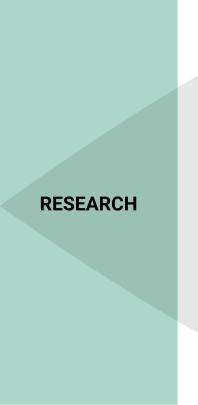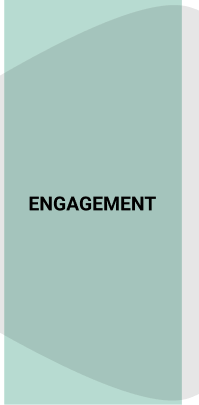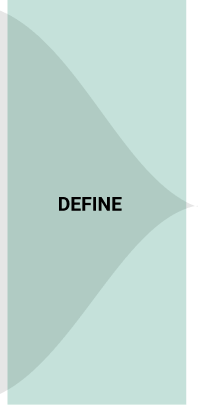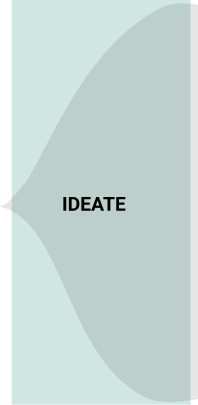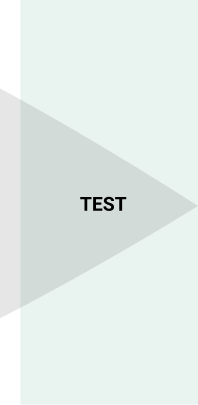Power Reclamation through Technology
Enhancing Clearfork's ad hoc local network to address community needs
Preface
Public Interest Technology
This project was completed at Columbia University, centered around utilizing interdisciplinary skills to develop software in the interest of the public. Thus, a central concept involved creating our own definition of Public Interest Technology.
Throughout the design process we defined ‘Public Interest Technology’ as an alternative vision of technology developed to empower users to promote their own interests.
Technology is known to spread misinformation, accentuate discriminatory practices, perpetuate injustices, and allow for misuse of power and data. It is our shared belief that Public Interest Technology must avoid these pitfalls to become an engine of social and economic autonomy.
Pubic Interest Technology requires thoughtful design and focus on providing dedicated community leaders with the tools and know-how to take control of their digital lives.
Throughout the design process we defined ‘Public Interest Technology’ as an alternative vision of technology developed to empower users to promote their own interests.
Technology is known to spread misinformation, accentuate discriminatory practices, perpetuate injustices, and allow for misuse of power and data. It is our shared belief that Public Interest Technology must avoid these pitfalls to become an engine of social and economic autonomy.
Pubic Interest Technology requires thoughtful design and focus on providing dedicated community leaders with the tools and know-how to take control of their digital lives.

Problem
Clearfork Valley is currently mitigating the institutional impacts of the long, exploitative history of the mining industry. Despite many challenges, Clearfork remains resilient with a thriving Appalachian culture and hope in the potential of reliable internet access. The community has improved access to internet through newly installed Portable Network Kits. This new design not only supports existing community efforts, but also expands on the off-grid applications available on the PNK through an improved user interface and new archiving platform.
Community members and visitors to Clearfork are able to share, preserve and explore the history and culture of Clearfork on a local network with easily navigable functionality. The updates to the PNK is a mechanism for empowerment, that looks “beyond the goal of simply connecting people to the internet.”
Process
We followed the PIT’s Double Diamond Design methodology, but also maintained flexibility that listened to the community’s needs throughout the design process.
Research & Engagement

Clearfork Valley, a remote area of northeastern Tennessee.
Clairfield occupies a relatively broad hollow along the Clear Fork just east of the Claiborne-Campbell county line, and south of the Tennessee-Kentucky state line. Eagan lies further down the valley to the west. Tennessee State Route 90 is the only major highway in the area.
https://en.wikipedia.org/wiki/Clairfield,_Tennessee
Clairfield occupies a relatively broad hollow along the Clear Fork just east of the Claiborne-Campbell county line, and south of the Tennessee-Kentucky state line. Eagan lies further down the valley to the west. Tennessee State Route 90 is the only major highway in the area.
https://en.wikipedia.org/wiki/Clairfield,_Tennessee
Mining
Clearfork area has been mined repetitively since 1905. In recent years,
surface mining sites
were proposed by Kopper Glo in 2012, 2016 and 2020.
“While the mining industry may create jobs, under-provision of basic life-supporting amenities such as health care and education raises questions about the viability of the mining industry as a long term strategy for sustainable development.”
“While the mining industry may create jobs, under-provision of basic life-supporting amenities such as health care and education raises questions about the viability of the mining industry as a long term strategy for sustainable development.”
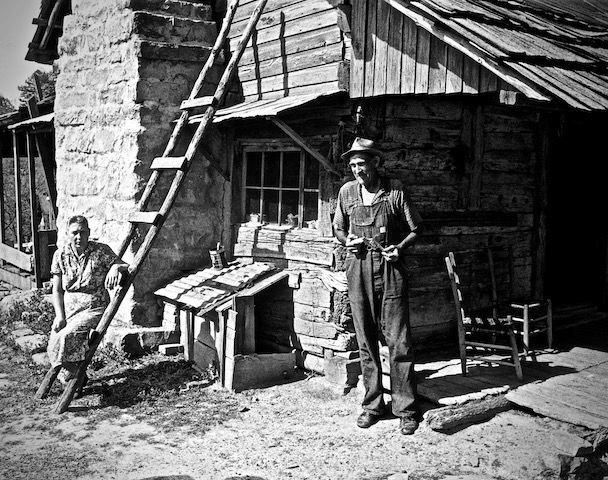 Photographer credit: George Roesch Johnson
Photographer credit: George Roesch Johnson
Economic Issues
These include: chronic high unemployment and poverty levels 2.5 times higher than the national
level and 2.2 times higher than the state level.
Social Issues
These include: no ambulance service, the highest death rate in Tennessee due to the
opioid
crisis
, and high gas prices and a lack of cars despite the nearest grocery store and hospital 30 minutes away.


Southern Connected Communities Project
Managed by April Jarocki, has been developed here with assistance from Community Tech NY. As a result the first 3 Portable Network Kits were distributed in Clearfork Valley.
Managed by April Jarocki, has been developed here with assistance from Community Tech NY. As a result the first 3 Portable Network Kits were distributed in Clearfork Valley.
By the end of the preliminary research phase, we summarized the main opportunities and constraints that the new technology of Portable Network
Kits and our complementary software might impose on the Clearfork Valley community.
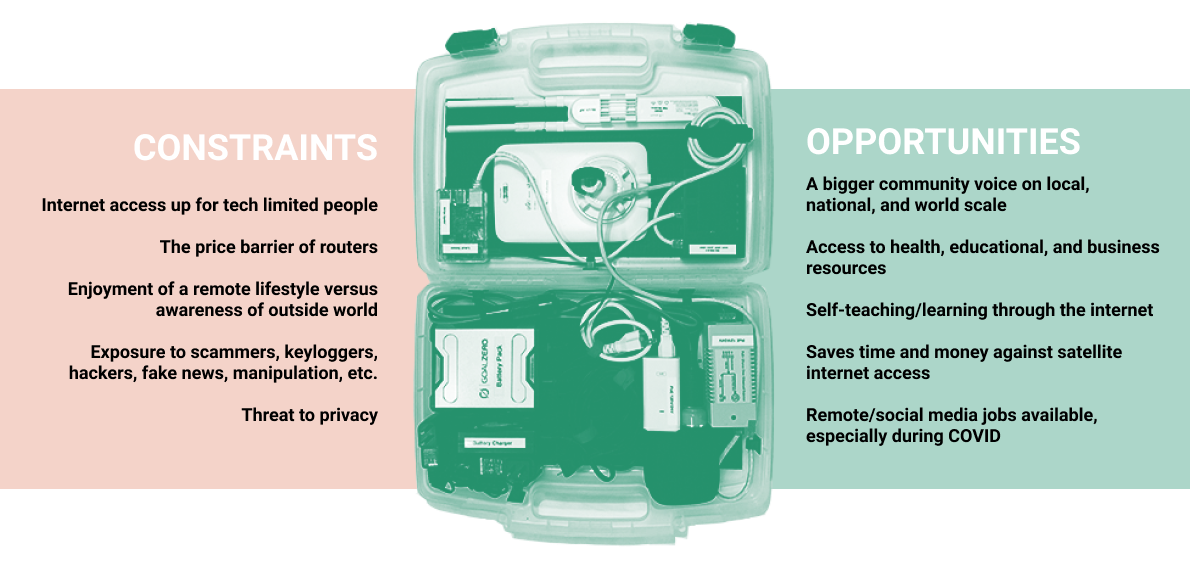
User Interviews
Unable to reach any resident or community representative on this stage of the project,
we consulted experts who have collaborated with SCCP.

HOUMAN SABERI
OPERATIONS DIRECTOR, CTNY
Fundamental to our work is that technology is not just, you know, it's not just the end goal.
It's a tool, it's a tool or a means to achieve a very specific community developed goal ... It's about really building power,
transferring the knowledge and skills and resources so that folks can be their own problem solvers.
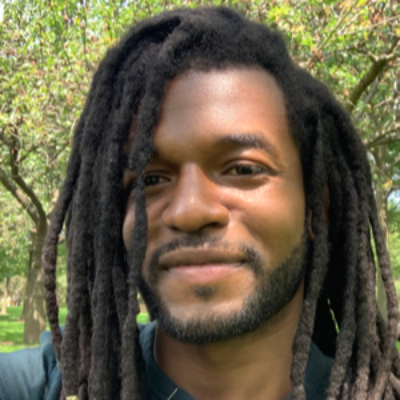
EVER BUSSEY
RESEARCHER & ETHNOGRAPHER, CTNY
Clearfork is on a quest for power to heal from the scars, the intergenerational trauma that
came from corporate land grabs [from mining companies], exploitation and harsh dependency, the kinds of poverty
and the drug panic that came from that. Building broadband internet is not a complete solution, but it's a step in
a process to heal from those things.

MARIE WEBSTER
FOUNDER & EXECUTIVE DIRECTOR, CCI
She said, ‘we can go to the goodwill and get a pair of shoes. We walk around barefoot, because we like the way the earth
feels between our toes’. She was really talking about how people come to this region … and Marie is always wary of how
[people] look at them, like, ‘oh you poor Appalachian folk!’, but this comment really speaks to how radical power reclamation is.
They don't want your ideal of comfort or success. They want a relationship with their land. They don't want to wear shoes.
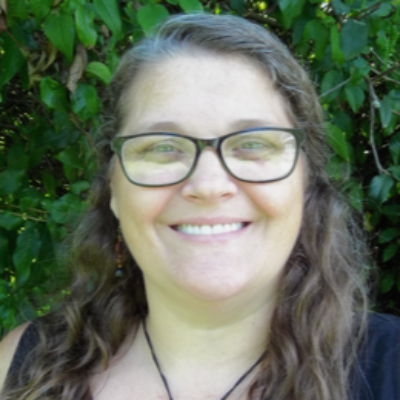
APRIL JAROCKI
COORDINATOR, SCCP
She said ‘I think it's going to be a way to hopefully pull folks more together and connect them to the outside world because
some of these kids have never left this holler’. She said it herself, but one role that the internet can play is providing
alternatives to the drug pipeline or crime that is definitely something that the people fear in the community.

JASON GRIFFEY
FOUNDER OF LIBRARYBOX
So that move, where you took this sort of 'art project’ and put it onto this really inexpensive hardware
was what made me think this might have opportunities outside of the main statement, that there may be some social good that
could come from something that was effectively a 20-dollar digital library.
User Personas
User Personas In order to formulate a framework for future design explorations, we analyzed 3 personas identified by Ever Bussey in his ethnographical research.
These interviews provided additional insights that were largely missing from previous research, conducted remotely and only with the use of resources available online, which, in the case of a desolate community with restricted internet access, limited our explorations in a significant way.
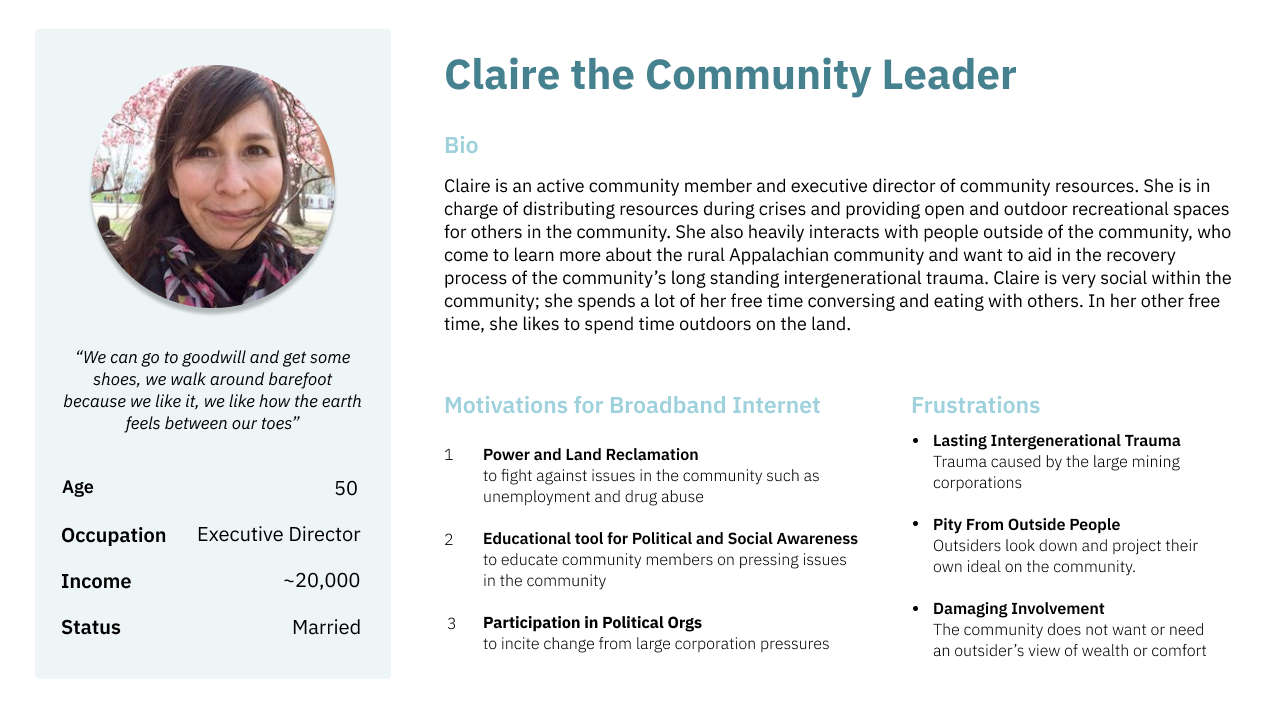

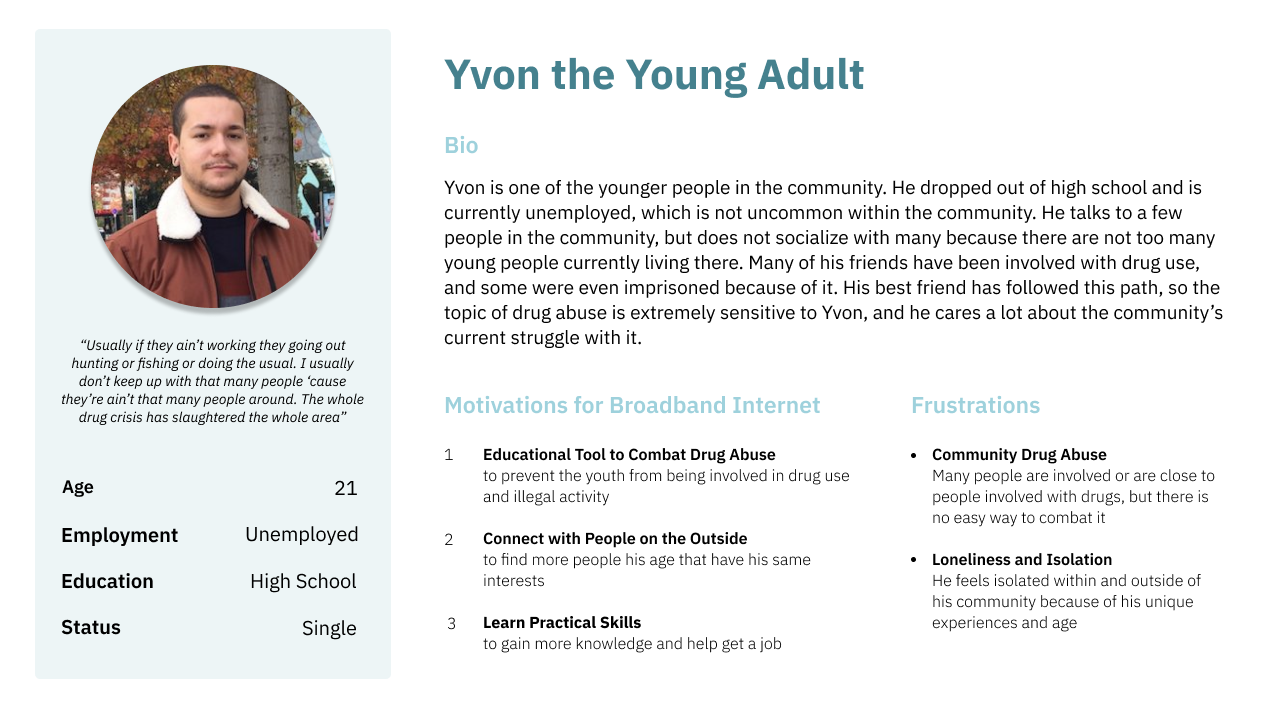
User Journeys
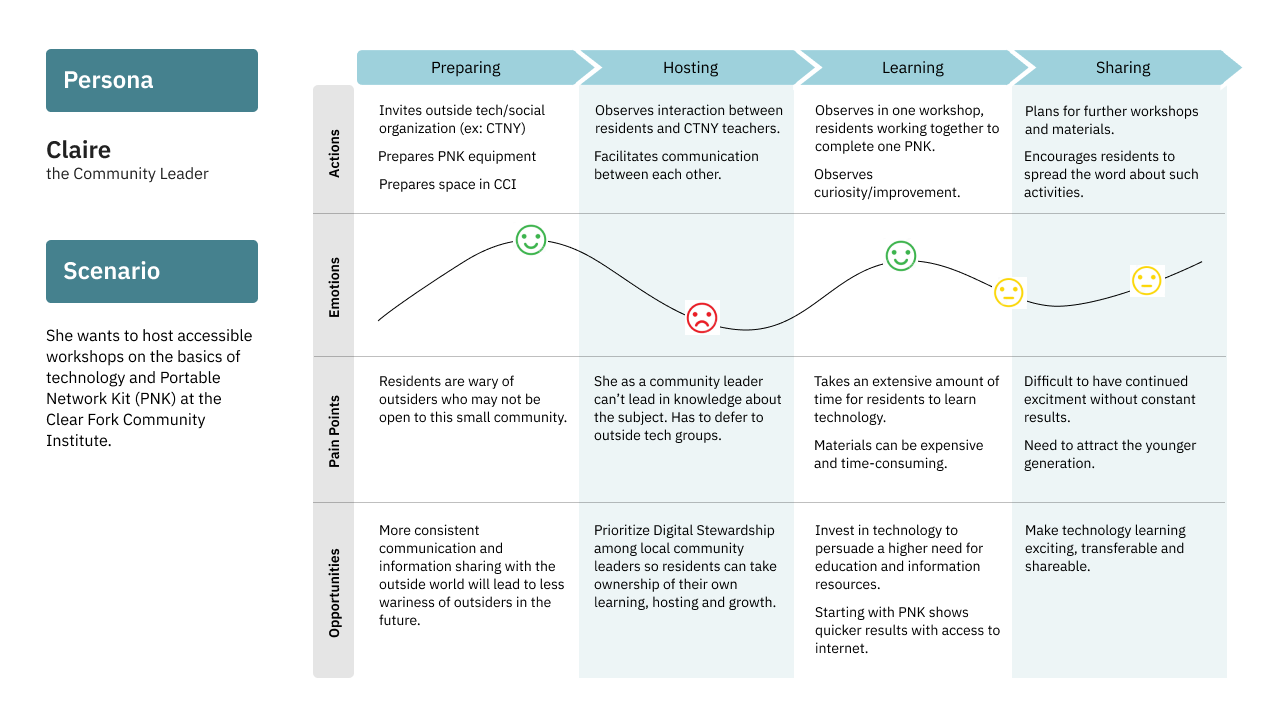

PIT Insights
HAVE YOU IDENTIFIED THE QUESTIONS AND RISKS MOST
RELEVANT TO THIS POPULATION?
RELEVANT TO THIS POPULATION?
Consider point of view of individuals who have very little experience using web applications.
Emphasize clarity and a sensible user flow. Software should be self explanatory.
Need to utilize common language and symbols that can be used by anyone, regardless of prior experience.
Make it as easy as possible to download / install / load
How to make the software accessible despite physical limitations of hardware.
Synthesis: Define & Ideate
CTNY Goals
In order to be successful, our work needed to fit into the project
already under way in a way that would be as seamless and
clear as possible.
The guidelines provided by CTNY were not obligatory, but
incredibly helpful to make our work well-grounded, useful and
adequate.

Identifying Themes
A careful analysis of all gathered materials resulted in a
formulation of starting themes that could inform further design
explorations.
Many of the themes were suggested to us explicitly by our
interviewees, some of them were mentioned in expert
interviews or clarified during individual research.
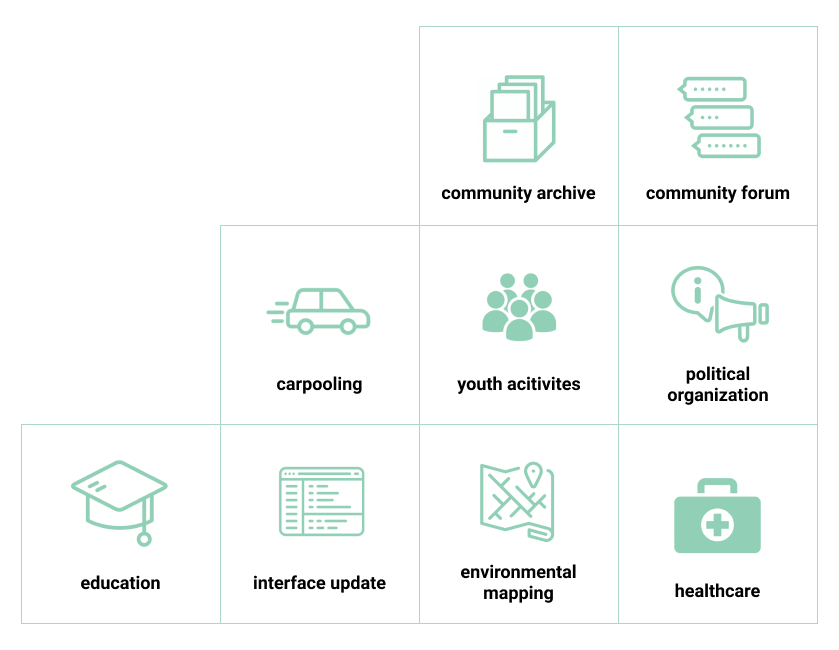
How Might We’s
Guiding themes throught the rest of the project, repeatedy revised each stage in order to make sure that the technology we are developing is in fact addressing the issues we decided to tackle.

Brainstorming Session

Key Insights and Decisions
After brainstorming over 50 ideas, we came to a few important conclusions:

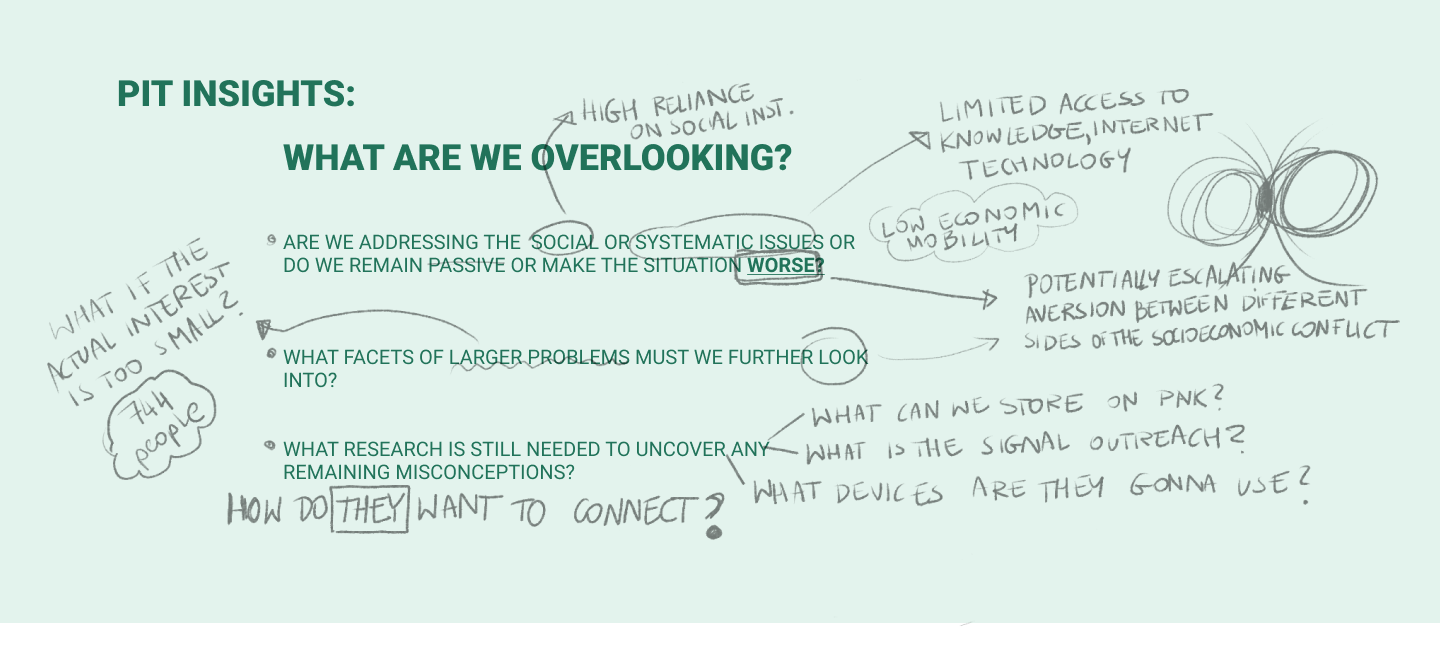
Prototype
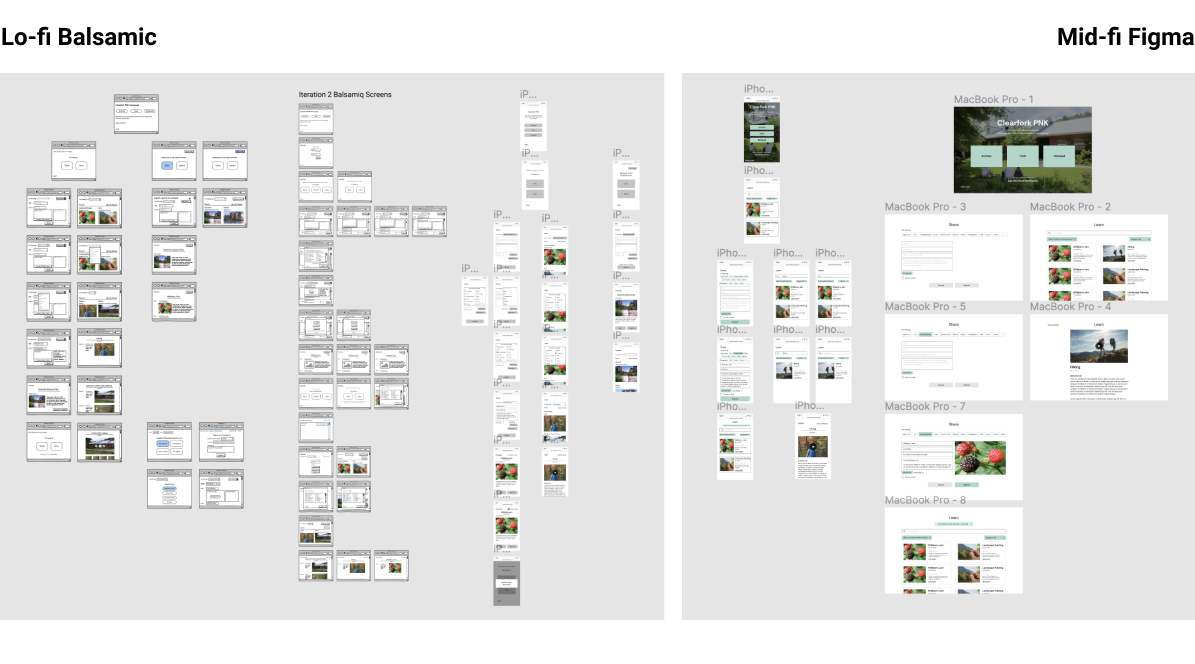
Constant feedback with members of the Clearfork Community and low-tech community experts led to refinements in how users interact with the application.
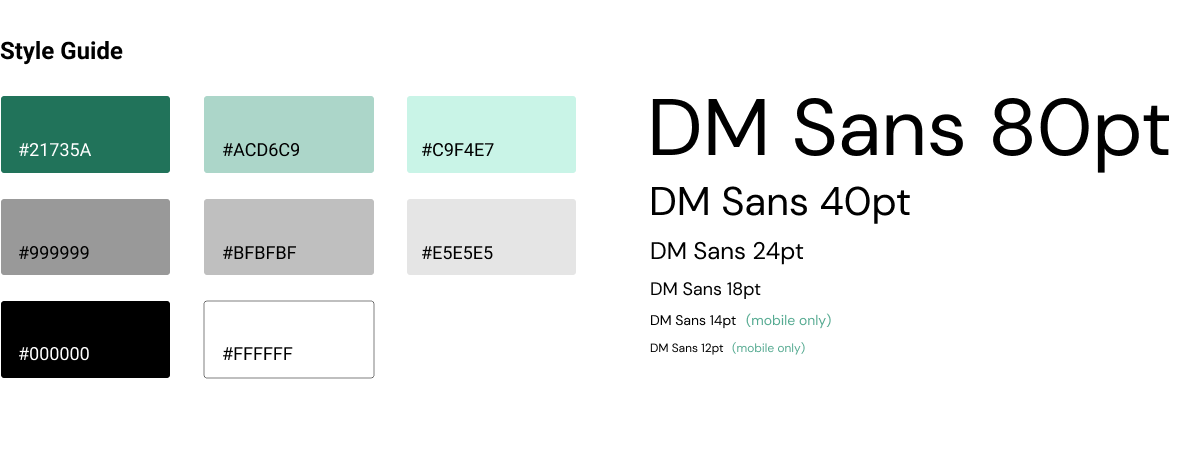
PIT Insights
HAVE YOU IDENTIFIED THE QUESTIONS AND RISKS MOST
RELEVANT TO THIS POPULATION?
RELEVANT TO THIS POPULATION?
Consider point of view of individuals who have very little experience using web applications.
Ease in introduction of higher speed internet and technology.
Need for additional training of administrators and normal users.
Need for additional precautions for friendliness and safety.
Maintainance of PNK and application over time.
Test
Three iterations of interviews and tests are conducted with users, consultants, advisors and
friends.
Key Feedback
1. UI Update and Archival App are priority for immediate use.
2. Exploring workflow of WordPress and optimizing code.
3. Answer existing needs
4. Use Archive to tell “real world” story
“Customization of interface: background photos for homepage”
“Community interaction: restore comment section as a guest book”
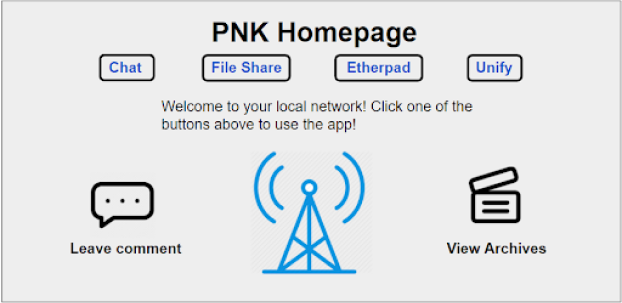
“No need to ‘hide’ difficult do understand functions, apply hierarchy to the location of buttons on
the site”
“Improve graphic aesthetics ”
“Learn interface: replace share/learn buttons with categories + share”
“Add an exploration feature for people who don’t know what they are looking for”
“Searching for content -
one way of searching for basic use, more in ‘advanced search options’ ”

“Confusing sections - clarify structure of the archival entry”
“What type of files can I upload? How can I check this?”
“Share categories need an ‘other’ choice to add a new category”
“Flexibility in categories, template, and file upload types”
PIT Insights
WHAT RISKS MIGHT NOT BE ENCOMPASSED BY YOUR PROTOTYPE TESTING?
Engagement: people rarely come in to the Clearfork Community Institute. If they do stay, in their cars parked outside
Tested with CTNY which is closely related to our target audience
Would be ideal to test on actual residents of Clear Fork Valley
Assume that the test subjects are interested in posting their interests and in reading posts from other community members.
Test with April Jarocki, who manages the archive. However, she is the only Clearfork community member that is able to test the prototypes.
Test captured if the concept of an archive is feasible and useful. The test did not capture the entirety of our design and more advanced features.
Results
Minimal Viable Product
A demo video for our Minimum Viable Product (MVP) is included below. This MVP
was developed based on the user testing of our various prototype iterations to focus on the
community’s immediate priorities, also taking into account the current status of the Archive and PNK
initiatives. Thus, our MVP emphasizes the following features:
Homepage
Retaining the simple homepage while including imagery
Promoting comprehension through revising labels, i.e. “Etherpad”
becomes “Notepad”
Reincorporating the PNK’s comments feature as a virtual guestbook
Archive
Showing content on the archive landing page to aid in discovery
Providing a template that allows for flexibility
Accommodating a variety of file types and quantity of files
Future Considerations

Publish to Web
The archive should eventually allow those outside of Clearfork, especially those from the
community who moved away, to access the archive’s contents via the web.
This feature ensures that archive participants stay in control of their data, allowing them
to decide if their entries should be made available online or remaing local.
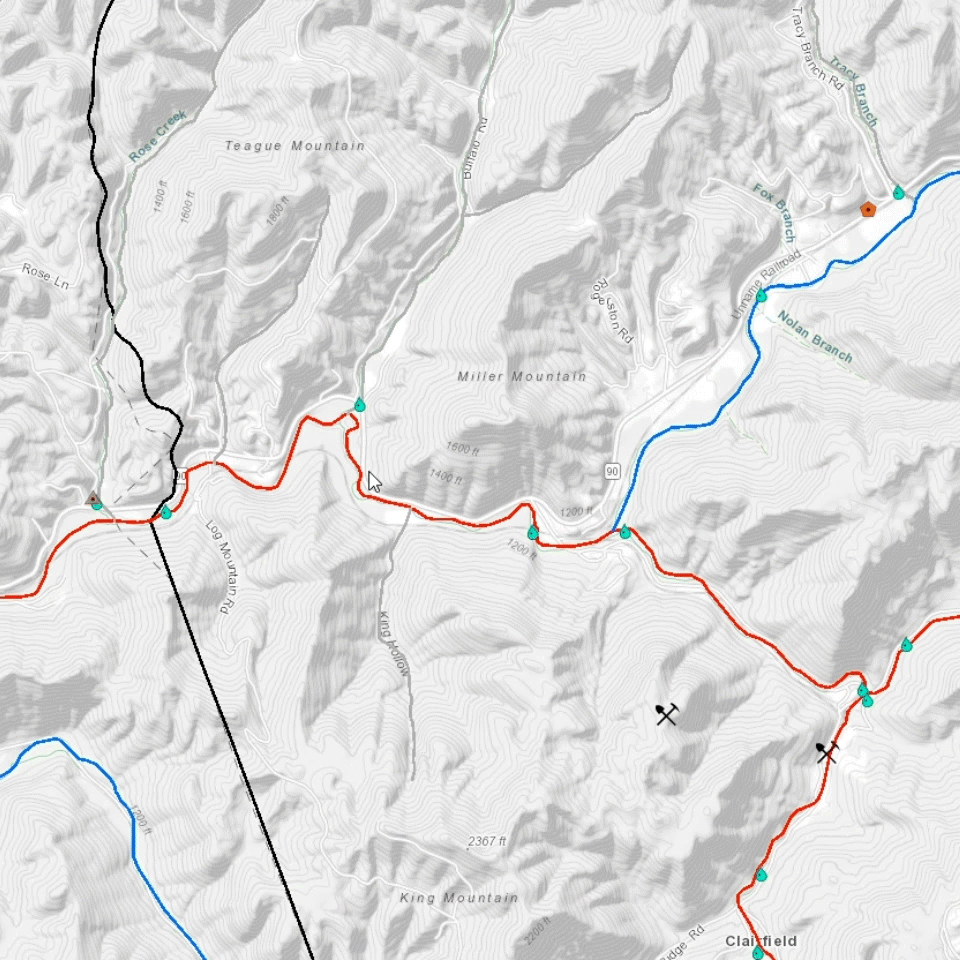
Water Quality Mapping
CCI has been collecting local water quality data to monitor the local impacts of surface
mining and climate change.
To best accomodate this data, an interactive, local network-based mapping tool could be
created. However, this is currently beyond the features of the Wordpress currently being
used on the PNK.
Reflections
Key PIT Takeaways
Appalachia has been marred by a history of resource extraction, so
any
technology deployed must avoid continuing and actively dismantle
the cycle of extraction
(of attention, data, etc.) perpetuated by many
technologies.
The Public Interest Technology Design Process assessed for
bias,
exclusion, representation, consequences, risks, trade-offs and other systemic
reflections
to create a product that is designed with and for the community.
It is necessary to
research existing conditions in order to create
technology that is implementable
for the community given any constraints.
Working with the community and allowing them to be part of the
design process is critical
to understanding their needs, as well as creating
community ownership of the project.
PIT Challenges
For Engagement stage of the design process, we were working with a community that has low access to reliable internet. Fortunately, we were able to work with CTNY and their ethnographer, who had already engaged with the local community. Having a knowledgeable partner to help with engagement was of paramount importance to the project. On the definition stage, we had many discussions about unintended consequences around data, privacy, and misinformation. With that in mind, we came to the decision with our partners to have an administrator moderate archive posts. We also thought it was necessary to have the community have control over the archive data.
PIT Opportunities
The PIT design process allowed for many opportunities for collaboration and knowledge sharing, which ultimately led to a richer final design. With a heavy focus on participation, following the process led us to work hand and hand with our partner (CTNY), the community (through April), and an outside expert (Jason from LibraryBox). Through this we were more aware of the issue of accessibility and ensuring that people were not unintentially excluded.
The PIT design process allowed for many opportunities for collaboration and knowledge sharing, which ultimately led to a richer final design. With a heavy focus on participation, following the process led us to work hand and hand with our partner (CTNY), the community (through April), and an outside expert (Jason from LibraryBox). Through this we were more aware of the issue of accessibility and ensuring that people were not unintentially excluded.

Acknowledgements
This project would not be possible without the support of following people:
April Jarocki
of the Southern Connected Communities Project in
Clearfork, Tennessee
Thank you to our advisors:
Mark Hansen and Lydia Chilton
Team Members:
Regina Alcazar, Zuzanna Jarzynska, Karen Lin, Yuanyang Teng,
Evan Tilley, Ian Wach, Bonnie Wang
